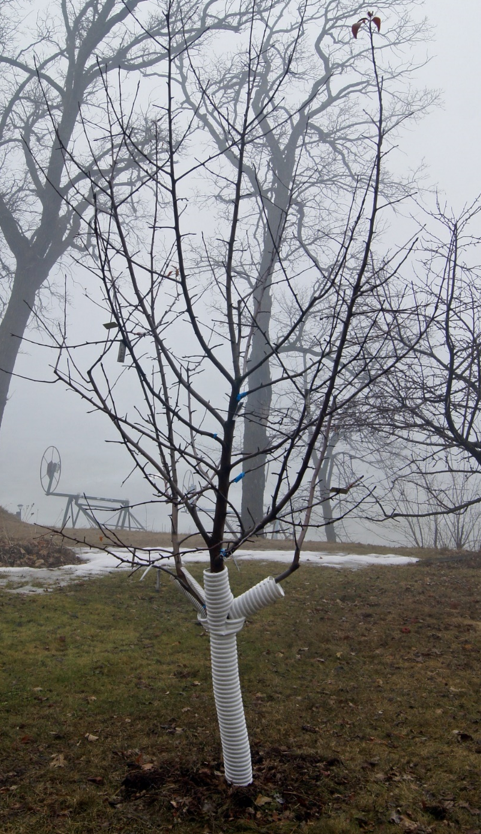Preparing Trees for Winter
This page was adapted from the article, "Winter Prep for Trees," which appeared in Crop & Pest Report on September 22, 2022.
As we prepare for winter, there are simple management actions that we can take to help trees survive the winter and even thrive next summer.
For conifers, it’s very important that they go into winter fully hydrated. Conifers that are drought-stressed are more prone to the type of damage that is generically called ‘winter injury’. Winter injury takes many forms and has several potential causes; nevertheless, studies have shown that trees that are well-hydrated going into winter are less likely to suffer damage over the cold season. Watering should get the soil moist, but not saturated, to as deep as you can get it. Remember also that tree roots extend far beyond the edge of the tree crown. The larger the area that can be watered, the better.
Foliar diseases were more prominent in 2022 because of the early-season moisture. If your trees had foliar fungal problems such as frogeye leaf spot, apple scab, oak leaf blister, or one of the anthracnose diseases, then be sure to rake up and remove or destroy all the fallen leaves this autumn. Fungal spores over-winter in the fallen leaves so getting rid of this source of inoculum will go a long way towards preventing foliar diseases next year.

Finally, make sure to protect the stems of young/small trees from the various ravages of winter. Often, this means putting some type of white wrap or corrugated white pipe on the stem to help prevent sunscald (another form of winter injury). Perhaps more importantly, these products can help prevent damage from deer, rabbits, or voles. Make sure that the wrap goes high enough that it will reach well beyond the expected snowpack, as rabbits can climb the drifts and girdle stems or even branches of deciduous trees. Sometimes, it may even be better to place a fence further out from the stem, to keep the deer away from the lower branches.
